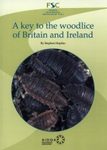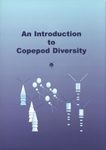By: Thomas Breithaupt(Editor), Martin Thiel(Editor), Jorge Andrés Varela Ramos(Illustrator)
565 pages, colour & b/w photos and illustrations
![Chemical Communication in Crustaceans Chemical Communication in Crustaceans]()
Click to have a closer look
About this book
Contents
Customer reviews
Related titles
Recommended titles
About this book
The crustaceans are ecologically and economically important organisms. They constitute one of the dominant invertebrate groups on earth, particularly within the aquatic realm. Crustaceans include some of the preferred scientific model organism, profitable aquaculture specimen, but also invasive nuisance species threatening native animal communities throughout the world. Chemoreception is the most important sensory modality of crustaceans, acquiring important information about their environment and picking up the chemical signals that mediate communication with conspecifics.
Significant advances have been made in our understanding of crustacean chemical communication during the past decade. This includes knowledge about the identity, production, transfer, reception and behavioral function of chemical signals in selected crustacean groups. While it is well known that chemical communication is an integral part of the behavioral ecology of most living organisms, the intricate ways in which organisms allocate chemicals in communication remains enigmatic.
How does the environment influence the evolution of chemical communication? What are the environmental cues that induce production or release of chemicals? How do individuals economize production and utilization of chemicals? What is the importance of molecule specificity or mix of a molecule cocktail in chemical communication? What is the role of chemical cues in multimodal communication? How does the ontogenetic stage, the sex or the physiological status of an individual affect its reaction to chemical cues? Many of these questions still represent important challenges to biologists.
Contents
PART I. INTRODUCTORY SECTION Breithaupt & Thiel
- General Introduction Wyatt
- Pheromones and behaviour - overview, definitions
PART II. GENERAL OVERVIEW OF SIGNAL CHARACTERISTICS AND RECEPTION Koehl
- Finding the mate: Pheromone hydrodynamics and odour acquisition Weissberg
- Orientation to pheromone sources in turbulent plumes Hallberg
- Functional morphology of chemoreceptors Derby & Kamio
- Olfaction and pheromone reception in crustaceans Schmidt & Mellon
- Processing of chemical information in the crustacean brain. Beyond crustaceans: Hay
- The nature of communication chemicals: their solubility and volatility, stability and specificity. Vickers
- Pheromone communication in aquatic and aerial environments
PART III. CHEMICAL COMMUNICATION AND BEHAVIOUR
- Chemical communication in lobsters Breithaupt
- Chemical communication in crayfish Caldwell
- Chemical modulation of aggressive interactions in stomatopods Hazlett
- Alarm substance and predator avoidance in crustaceans Bauer
- Chemical communication in shrimp Thiel
- Chemical communication in peracarid crustaceans Gherardie & Tricarico
- Chemical communication in anomurans Harzsch & Hansson
- Chemical communication in terrestrial crustaceans Yen
- Chemical communication in copepods Beyond crustaceans: Rittschoff & Christy
- Honest signals or deceit- how reliable are pheromones? Hebets
- Chemical communication in a multi-modal context
PART IV. TOWARDS IDENTIFICATION OF CHEMICAL SIGNALS Hardege
- Identification of a sex pheromone in decapod crustaceans Chang
- Chemical communication and hormones Clare
- Settlement cues of barnacles Beyond crustaceans: Sorensen
- A review of pheromone communication in fish
PART V. APPLIED ASPECTS: Pickett
- The use of pheromones in integrated pest managements (IPM) Lower & Moore
- Environmental contamination and effects on chemical communication Barki & Karplus
- Principles of crustacean farming: Problems and solutions
Customer Reviews
By: Thomas Breithaupt(Editor), Martin Thiel(Editor), Jorge Andrés Varela Ramos(Illustrator)
565 pages, colour & b/w photos and illustrations
"This well-edited, multiauthored book reviews how crustaceans – mainly aquatic – orients to and communicates via chemical signals and cues and thus helps us understand the ocean's cryptic life. [...] This volume will be of concern to anyone working with the chemical ecology of aquatic organisms as it represents steps toward deciphering the perceptive world of aquatic organisms and identifies future research avenues."
– Thomas Kiørboe, The Quarterly Review of Biology, Vol. 87 (2), June, 2012

















![The Encyclopedia of the Swedish Flora and Fauna, Kräftdjur: Krill – Tiofotade Kräftdjur [Swedish]](http://mediacdn.nhbs.com/jackets/jackets_resizer_medium/26/268174.jpg?height=150&width=118)



![Les Crustacés Décapodes des Petites Antilles: Avec de Nouvelles Observations pour Saint-Martin, la Guadeloupe et la Martinique [The Crustacean Decapods of the Lesser Antilles: With New Observations for Saint-Martin, Guadeloupe and Martinique]](http://mediacdn.nhbs.com/jackets/jackets_resizer_medium/24/245203.jpg?height=150&width=106)














